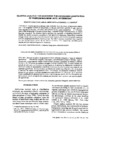Please use this identifier to cite or link to this item:
http://www.alice.cnptia.embrapa.br/alice/handle/doc/373113| Title: | Cluster analysis for assessing the agronomic adaptation of Panicum maximum Jacq. accessions. |
| Authors: | DIAS FILHO, M. B.  SIMÃO NETO, M.   SERRÃO, E. A. S.   |
| Affiliation: | MOACYR BERNARDINO DIAS FILHO, CPATU MIGUEL SIMAO NETO, CPATU EMANUEL ADILSON DE SOUZA SERRAO, CPATU. |
| Date Issued: | 1994 |
| Citation: | Pesquisa Agropecuária Brasileira, Brasília, DF, v. 29, n. 10, p. 1509-1516, out. 1994. |
| Description: | Cluster analysis techniques were conducted using the degree of agronomic adaptation - an integrated measure of susceptibility to diseases and insects, growth of vigor, recovery from simulated herbivority, soil cover, and potential for dry matter production - of 118 accessions of the forage grass Panicum maximum jacq., evaluated during a two-year period, in eastern Brazilian Amazonia. The objective was to determine the feasibility of clustering procedures to classify the studied accessions according to their agronomic adaptation. Hierarchical (complete linkage) cluster and nonhierarchical (k-means) cluster analysis were found to be suitable statistical tools for assigning accessions to discrete groups. The 118 P. maximum accessions were classified into four distinct clusters of 21, 40, 41, and 16 accessions with, respectively, excellent, good, regular, and poor degree of agronomic adaptation. |
| Thesagro: | Análise Estatística Panicum Maximum |
| NAL Thesaurus: | Amazonia multivariate analysis statistical analysis |
| Keywords: | Planta gramínea forrageira Adaptação Análise multivariada Brasil Adaptation Forage grass |
| Type of Material: | Artigo de periódico |
| Access: | openAccess |
| Appears in Collections: | Artigo em periódico indexado (CPATU)  |
Files in This Item:
| File | Description | Size | Format | |
|---|---|---|---|---|
| pab04out94.pdf | 313.63 kB | Adobe PDF |  View/Open |









